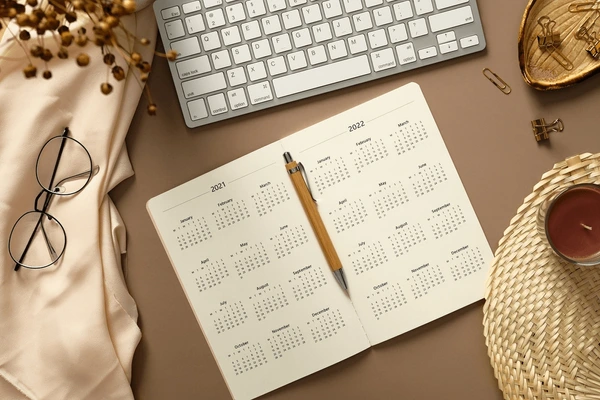We all have goals. Whether it’s improving our health, becoming more organized, growing professionally, or simply living more intentionally, we usually know where we want to go. The challenge is in sticking to the behaviors that get us there—in other words, building strong habits.
The truth is, your life is shaped not by the big actions you take once in a while, but by the small habits you practice every day. This article will guide you through practical, science-backed strategies to build life-changing habits that actually stick.
Why Habits Matter More Than Motivation
Motivation is temporary—it comes and goes. Habits, on the other hand, are automated behaviors that don’t require constant willpower.
Once a habit is formed, it becomes a part of your identity. For example:
- Instead of “trying to eat healthy,” you become someone who chooses nutritious meals.
- Instead of “trying to wake up early,” you are simply an early riser.
- Instead of “forcing yourself to write,” you become a writer who writes daily.
To make a lasting change
Start Small (Really Small)
One of the biggest reasons habits fail is that we try to do too much at once. It’s exciting to set big goals, but habits form best when you start tiny.
If your goal is to start reading, don’t begin with 30 minutes a day. Start with just one page.
Why it works:
- It’s easy to do consistently.
- It reduces internal resistance.
- It creates momentum (doing one page often leads to more).
This method, often called “The Two-Minute Rule,” suggests starting any new habit in under two minutes.
Examples:
- Want to start exercising? Put on your workout clothes and do 2 push-ups.
- Want to start meditating? Sit in silence for 60 seconds.
- Want to journal? Write one sentence a day.
These small starts make the habit feel manageable and sustainable.
Attach New Habits to Existing Ones
This is called habit stacking, a method introduced by author James Clear. It involves pairing a new habit with something you already do regularly.
Formula:
After [current habit], I will [new habit].
Examples:
- After I brush my teeth, I will stretch for 2 minutes.
- After I make coffee, I will write my to-do list.
- After I check my email, I will drink a glass of water.
This strategy works because your brain already associates the current habit with a pattern, so adding a new one becomes easier to remember and repeat.
Design Your Environment for Success
Your environment should make your desired habits easier—and your unwanted habits harder.
To support good habits:
- Leave a water bottle on your desk as a reminder to hydrate.
- Keep books on your nightstand to encourage reading before bed.
- Prepare your gym clothes the night before.
To discourage bad habits:
- Remove junk food from your pantry.
- Silence non-urgent notifications.
- Keep your phone out of reach when working.
Your surroundings shape your behavior more than you think. Design them intentionally.
Use Visual Cues and Triggers
Sometimes, the simplest visual nudge can spark action.
Examples:
- A checklist on the wall
- A sticky note on your laptop
- A habit tracker app on your phone
- A calendar with big Xs marking each successful habit day
Seeing your progress visually is a powerful motivator. It taps into your desire to continue a streak and not “break the chain.”
Focus on Identity, Not Just Outcomes
Instead of saying “I want to lose 10 pounds,” say “I want to become someone who moves every day and eats intentionally.”
Focusing on identity leads to more sustainable change.
Ask yourself:
- What kind of person achieves the goal I want?
- What habits would that person have?
When your habits align with who you believe you are, change becomes natural.
Be Consistent, Not Perfect
You don’t need to do your habit every single day to make it stick. But you do need consistency.
Try the “never miss twice” rule: If you skip a habit one day, make sure to get back on track the next.
Quick consistency tips:
- Set reminders at the same time daily
- Pair habits with routines like morning or evening rituals
- Celebrate small wins to stay motivated
Track Progress and Reflect
Keeping track of your habits gives you valuable feedback and motivation.
You can use:
- A physical habit tracker
- Apps like Habitica, Streaks, or Loop Habit Tracker
- A simple spreadsheet or journal
Each week, take 10 minutes to reflect:
- What habits did I maintain?
- What felt challenging?
- What adjustments can I make?
Reflection turns behavior into progress.
Plan for Setbacks (Because They Will Happen)
Life gets messy. You’ll get sick, travel, or have stressful days. Expect this and create a plan for it.
- Create “minimum versions” of your habits (e.g., 5-minute workout)
- Build flexibility—don’t let one missed day lead to quitting
- Forgive yourself and return to your routine with kindness
Remember: success comes from getting back on track—not from being perfect.
Use Accountability (If It Helps You)
Some people thrive with accountability.
Ways to stay accountable:
- Tell a friend your goals
- Share your progress on social media
- Join a challenge group
- Hire a coach or mentor
Knowing someone is watching your progress can motivate you to follow through—even on tough days.
Give It Time (and Trust the Process)
Habits don’t form overnight. Research suggests it takes an average of 66 days to build a new habit—but this varies based on complexity and consistency.
What matters most is showing up.
- Be patient with the process.
- Track your progress.
- Adjust your strategies if needed.
- Trust that small efforts compound into big results.
Final Thought: You Already Have the Power
You don’t need to become a different person to build great habits. You simply need to show up each day and make one small, intentional choice at a time.
Each time you repeat a positive habit, you’re casting a vote for the type of person you want to become.
Over time, those votes add up—and so does your transformation.









